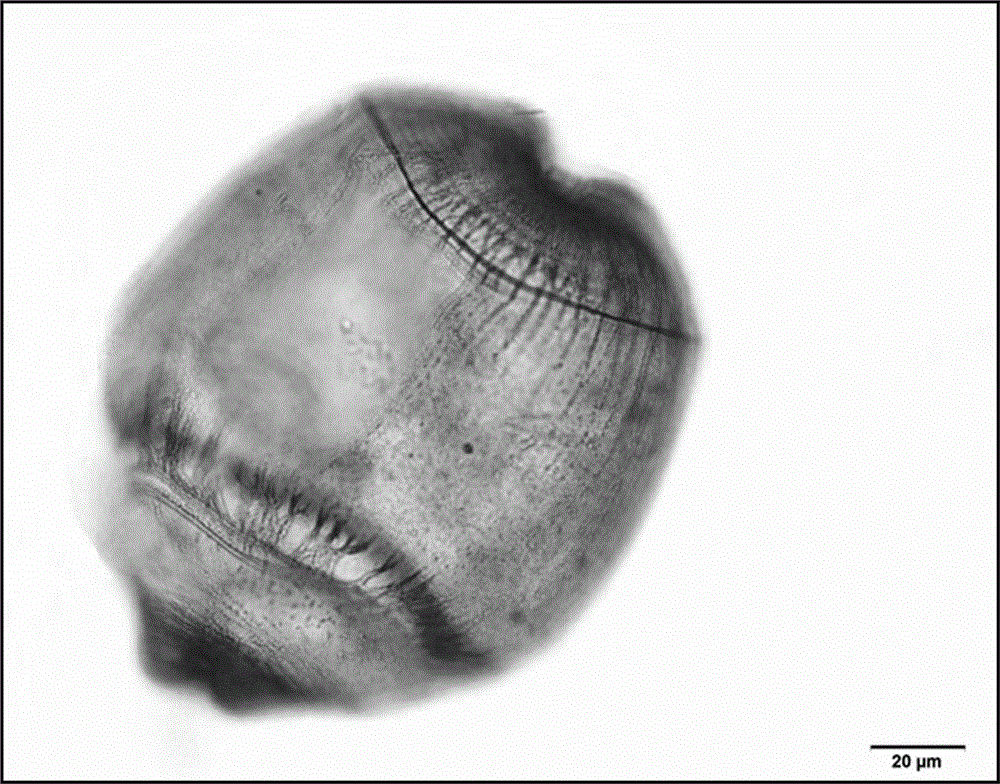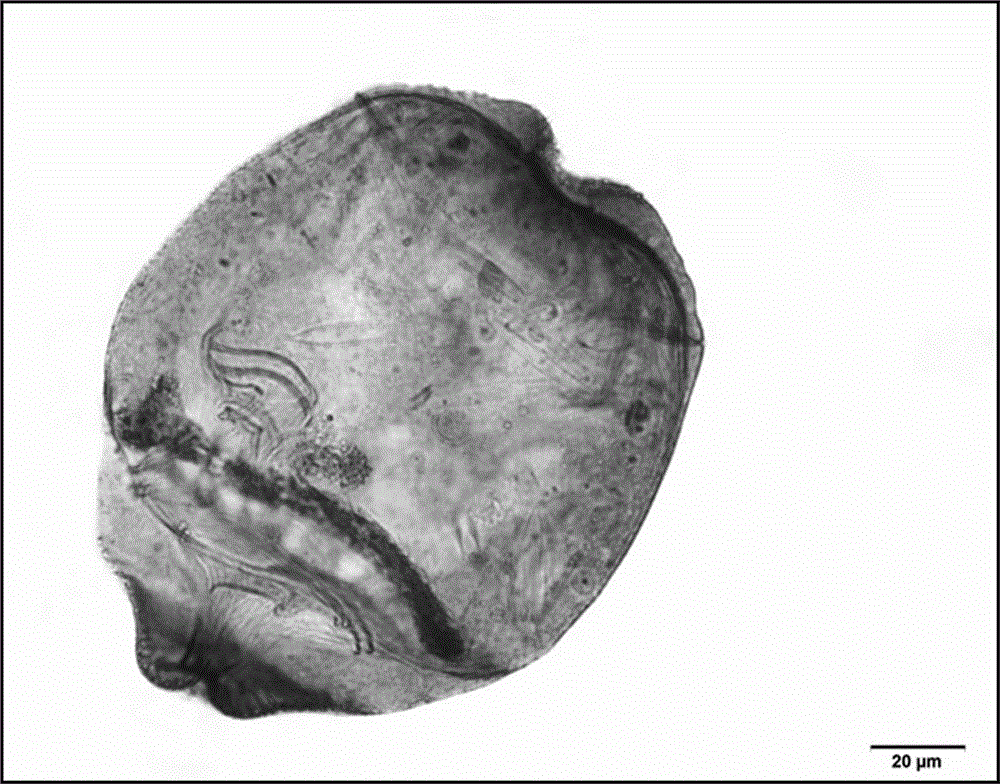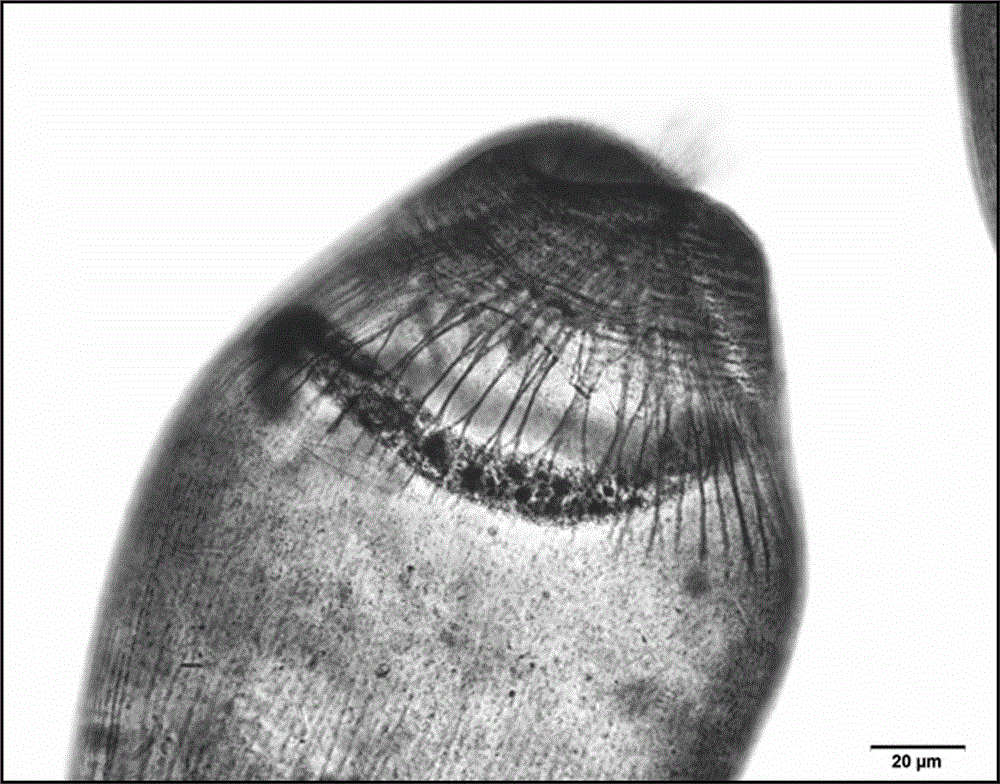Staining method of ciliates
A dyeing method and ciliate technology, applied in the preparation of test samples, etc., can solve the problems of loss of experimental samples, poor fixation effect, and experimental failure, and achieve the improvement of dyeing effect, better fixation effect, and shortening of experimental time. Effect
- Summary
- Abstract
- Description
- Claims
- Application Information
AI Technical Summary
Problems solved by technology
Method used
Image
Examples
Embodiment 1
[0046] Embodiment 1 (comparative example)
[0047] The traditional ciliate protein silver staining method, the steps are as follows:
[0048] (1) Front fixation: Use a straw to suck the worms to the corner of the glass slide to keep the residual moisture as small as possible, and then quickly wash the worms into the concave glass pit (pit) with saturated mercuric chloride (mercuric chloride) solution, Fix for 1-2 minutes (do not exceed 3 minutes).
[0049] (2) Rinse and patch: After fixation, rinse with warm distilled water for 3-5 times to wash off the mercury in the worm body. Suck out the water in the pit, leaving only a little water just enough to cover the worm body, add two drops of proteoglycerin water and mix well, and then suck the worm body onto a clean degreased glass slide. Suck off the excess protein glue, separate the worms from each other, add a drop of 0.5% collodion immediately after drying (when there is almost no moisture around the worm), shake it left ...
Embodiment 2
[0064] A method for dyeing ciliates, comprising the following:
[0065] Apply a layer of pure egg white evenly on one end of the slide and let it dry naturally.
[0066] Dip a little xylene saturated paraffin solution with a toothpick and spread evenly on the coverslip, and let it dry until the xylene is completely volatilized to form a uniform wax film on the coverslip.
[0067] Use a micropipette to suck the worm body to be sliced to the corner of the egg white-coated area of the glass slide to minimize the residual moisture, and then drop four drops of paste on the four corners of the wax-coated cover glass to cover the sample on the glass slide Above, lightly press the four corners of the coverslip with a toothpick to form a patch with worms fixed.
[0068] Pre-fixation: Add saturated alcoholic mercuric acid solution dropwise from one side of the coverslip as soon as possible, and fix for 1-3 minutes.
[0069] Take off the coverslip: put the patch into a staining jar...
Embodiment 3
[0083] The staining method of branchworm, including fixation in saturated alcohol mercuric solution and high-efficiency protein silver staining, specifically includes the following:
[0084] Preparation of protein glue glass slide: take pure egg white with a glass rod, evenly coat a layer of egg white protein on the right third of the glass slide, dry it in a desiccator for later use.
[0085] Use a secondary stretched micropipette to take a sample of Cladidae and place it in the embryo dish, rinse it with distilled water and place it in the middle of the protein-coated area on the protein glue glass slide.
[0086] Dip a little xylene saturated paraffin wax solution with a toothpick and apply it evenly on the cover glass. After the wax film is formed, suck the branch worm to the corner of the egg white-coated area of the glass slide with a micropipette, so that the residual water is as little as possible. Quartz sand particles with a diameter slightly larger than the worm b...
PUM
 Login to View More
Login to View More Abstract
Description
Claims
Application Information
 Login to View More
Login to View More - R&D
- Intellectual Property
- Life Sciences
- Materials
- Tech Scout
- Unparalleled Data Quality
- Higher Quality Content
- 60% Fewer Hallucinations
Browse by: Latest US Patents, China's latest patents, Technical Efficacy Thesaurus, Application Domain, Technology Topic, Popular Technical Reports.
© 2025 PatSnap. All rights reserved.Legal|Privacy policy|Modern Slavery Act Transparency Statement|Sitemap|About US| Contact US: help@patsnap.com



